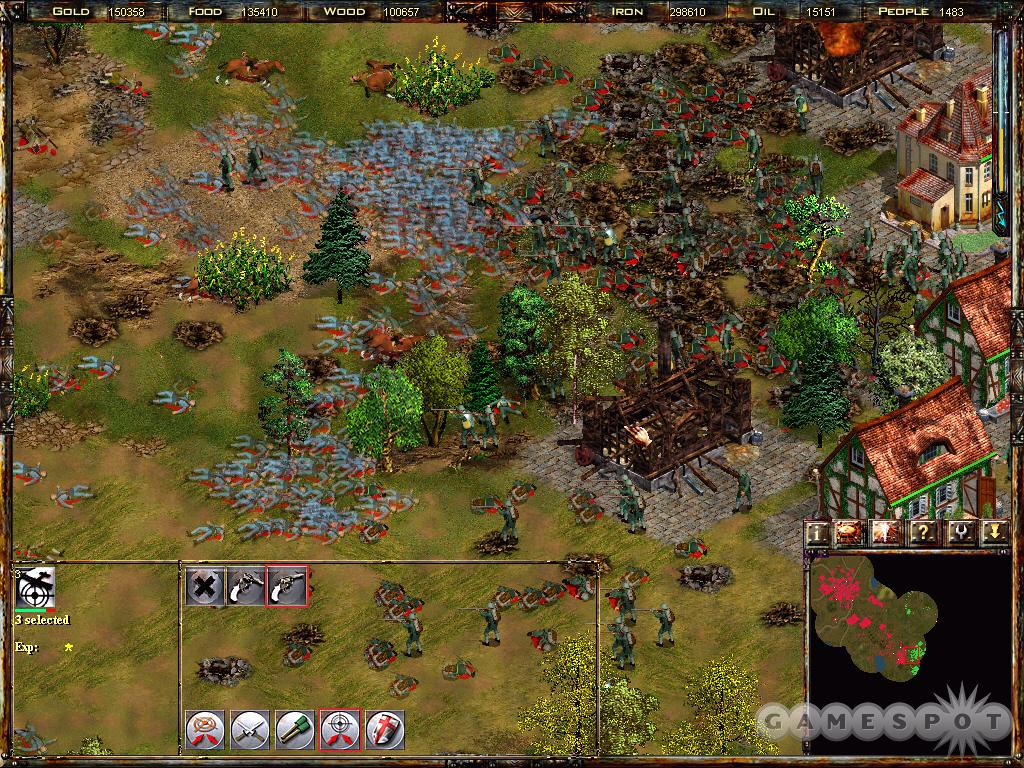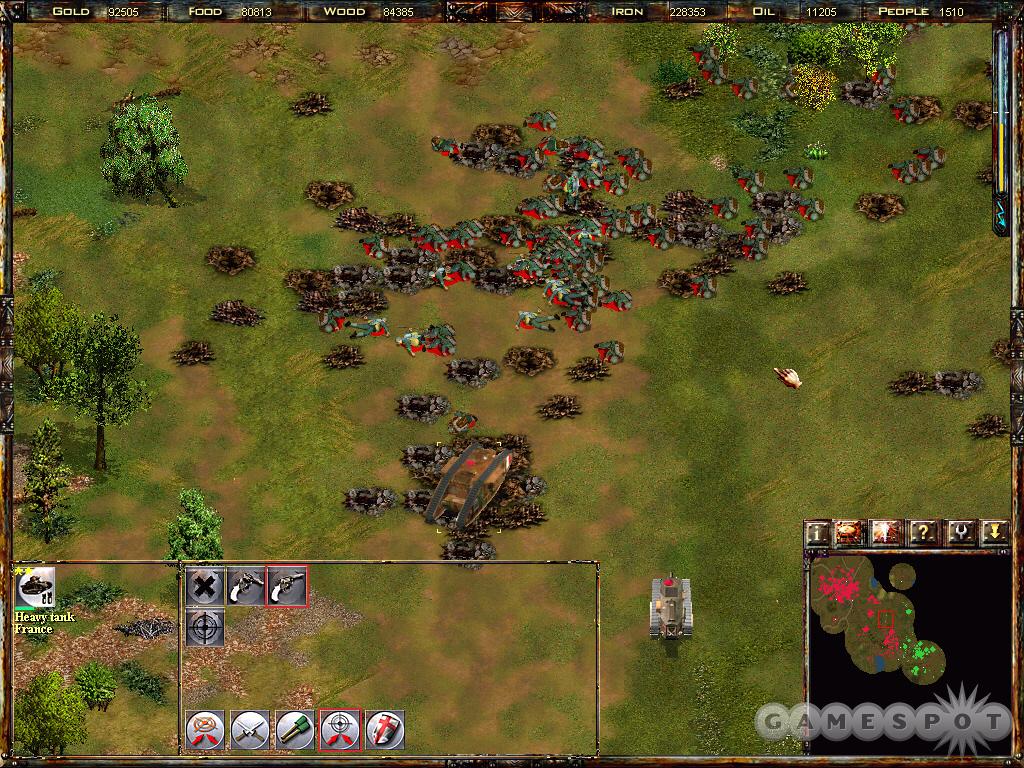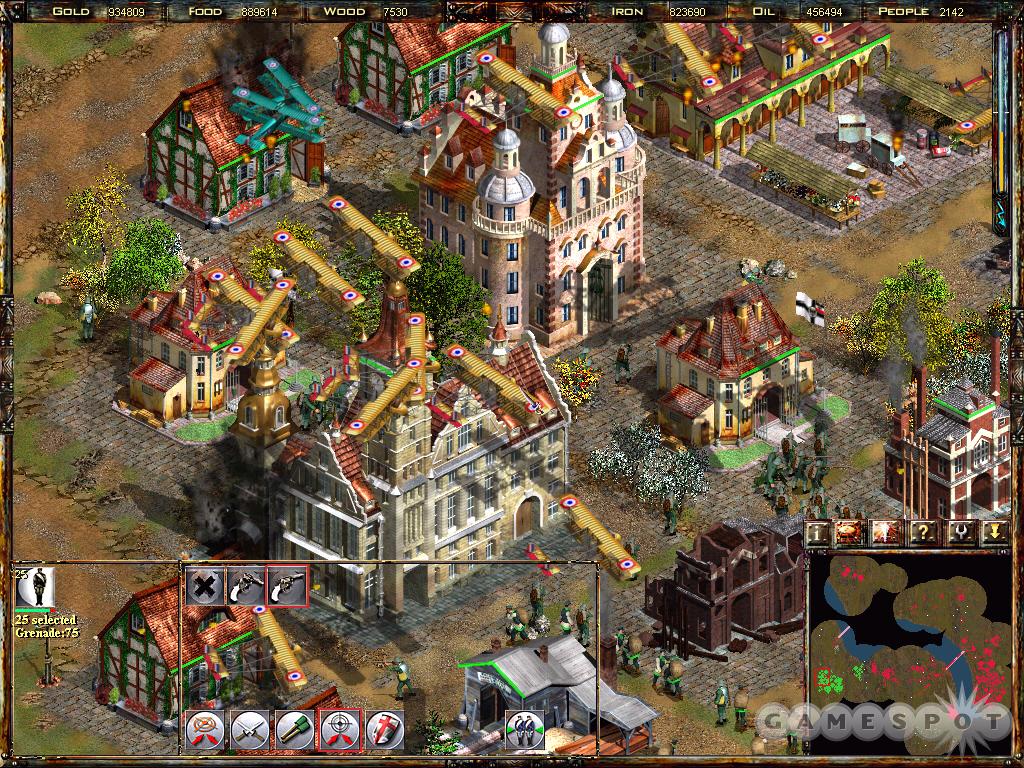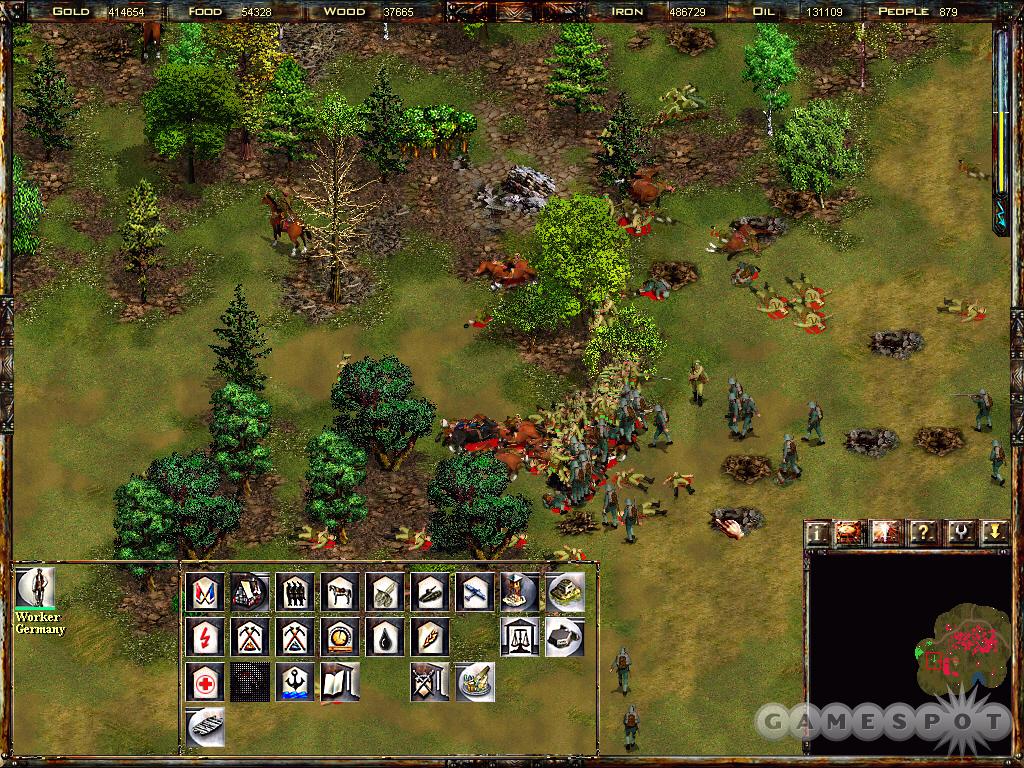Sadly, like the war it's based on, WWI: The Great War is an exercise in madness, frustration, helplessness, and human folly. This is a mess of a real-time strategy game that, to its credit, tries to re-create the epic size and scope that was the First World War--but unfortunately it's crippled by its own ambition, as well as a host of other problems.

As befits a World War I game, this is basically a game about attrition on a huge scale. This is a big game, with more than 60 scenarios that let you play as the five principal European powers in the war (America, which entered late in the war, isn't included). And the real-time strategy portion of the game is equally huge; the maps are gigantic, big enough for tens of thousands of units to easily maneuver around with room to spare.
Each of the scenarios is based on an actual battle or campaign from the war, though for all the detail you're given about audacious maneuvers and clever feints, most missions boil down to resource gathering, base building, unit production, and tank rushes on an enormous scale. There's very little subtlety at all; the only way to win is to churn out tens of thousands of units and constantly throw them into battle.
Any attempt to actually play WWI as a conventional RTS game will most likely end with the computer overwhelming you easily. This isn't a normal RTS game, because everything happens on such a large scale. You can't just build one or two sets of barracks; you need to build at least six or seven to be successful. You've got to build all the other structures too, usually multiple times to be safe. Barracks can churn out infantry at an extremely high rate, so you've got to constantly refresh their production queues. Then there's all the different research upgrades on all the buildings to worry about. It's so overwhelming that there's an option to turn on an economic advisor, which basically lets the computer handle all the base building and unit production for you, which lets you concentrate on combat.
Unfortunately, the combat portion isn't any easier, even if you don't have to worry about production. The problem mainly stems from the fact that you can't combine units into groups larger than 126. When you literally have thousands of units to move about, that translates into a lot of 126-unit groups to micromanage. And in a game where hundreds of infantry can get mowed down in seconds, it's a very unforgiving situation. You can easily lose half your army in the blink of an eye, before you can react. Combat is also very maddening; infantrymen will rush into melees, even when you want them to stand off and use their rifles. All the units on the screen will then congeal into a huge lump in the center, where it's virtually impossible to tell what's going on. There are no formation controls, no aggressiveness controls, or anything to help you control your units' behavior. But never fear, because there's an option to turn on a military advisor, which basically lets the computer handle all the fighting much more efficiently than you can.

Yes, that's right. With the economic and military advisors turned on, WWI is literally a game that will play itself. You can go take a long coffee break and come back and see the same battle raging as fiercily as before. Both advisors are smart enough to do a basic job, but what happens is that you essentially watch your base send a conveyer belt of men toward the front, where they die in droves. The computer is smart enough to send units on flanking and probing attacks against itself, but it's not smart enough to realize that after 50 failed infantry attacks against a machine gun position, it might be time to think of a new tactic. Come to think of it, this basically describes the First World War, with you relegated to helpless bystander.
Actually, that's not quite true. Your main role is to click on the upgrade buttons, since the economic manager doesn't seem to know how to research technologies. This can take quite a while, though, as most technologies require huge amounts of each resource, such as 100,000 food, 25,000 gold, 10,000 oil, and so on. And since the economic manager is busy churning out dozens of units to be thrown at the front line at any given moment, it's busy consuming those resources as fast as they're gathered. So a single battle can easily take upward of two to three hours to complete.

There are six resources that must be gathered: gold, food, wood, iron, oil, and electricity. All resources but electricity are listed at the top of the screen, while electricity is tracked in a narrow bar in the corner of the screen. It's easy to gloss over the electricity bar, but it's perhaps the most important resource in the game because it dictates the rate at which you can gather other resources and produce units. This vital concept is barely mentioned in the in-game tutorial (you have to read through the helpful hints list to see it).
WWI is also very badly translated. It was originally published in Europe by Russia's Buka Entertainment, and it shows. There are broken sentences, convoluted phrases, and obvious misspellings scattered throughout the entire game. And this isn't just a complaint about a few typos; there's an impact on gameplay, as certain parts of the game are translated differently from others. For instance, you'll be told to click a certain button in the upgrade panel, only to discover that the button was translated differently. At that point, your guess is as good as ours.
There are also some questionable design decisions, most notably the decision to have the fog of war black out the portions of the map where you don't have active units, which is insane. This is Europe in the 20th century we're talking about, a continent that's been inhabited for thousands of years. Surely the French would have a map of French soil? The fog of war should definitely hide enemy units that you can't detect, but there's no reason at all to darken the map.
Certain portions of the game look good, like ships and planes, but the infantry and terrain graphics look very dated, probably in order to allow the engine to render the thousands of units in a battle. Even the interface screens, though, have a crude aesthetic going on. There's also a noninteractive soundtrack that plays a bizarre mix of 1910s-era calliope music along with classical musical tracks like Ravel's "Bolero." It's almost surreal music to watch thousands fight and die to.

The pity is that there's certainly a lot of interesting potential in this game, and the First World War is sadly underrepresented in gaming. Contrary to popular belief, it wasn't just a huge trench war. But the fact is, the game falls on extreme sides of the spectrum of strategic complexity: It's either completely unmanageable, or it's completely automated. Either way, much like the First World War, it doesn't make for a pleasant experience.
Editor's note 02/24/04: When the review was originally posted, it incorrectly stated that there is no apparent indication of the game's electricity resource, and that unit groups are limited to 30 units in size. GameSpot regrets the errors.